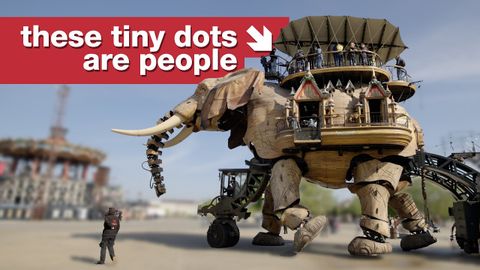
Subtitles & vocabulary
I rode a giant mechanical elephant. You can too.
00
林宜悉 posted on 2022/09/19Save
Video vocabulary
struggle
US /ˈstrʌɡəl/
・
UK /'strʌɡl/
- Verb (Transitive/Intransitive)
- To try very hard to do something difficult
- To fight or struggle violently
- Noun (Countable/Uncountable)
- Strong efforts made to do something difficult
- A difficult or challenging situation or task
A2
More deliberate
US /dɪˈlɪbərɪt/
・
UK /dɪ'lɪbərət/
- Adjective
- Carefully thought out in advance
- Done purposely
- Verb (Transitive/Intransitive)
- To consider a problem or decision carefully
B2
More sustainable
US /səˈsteɪnəbl/
・
UK /səˈsteɪnəbl/
- Adjective
- Capable of continuing for a long time
- Able to be maintained without running out of
B2
More plenty
US /ˈplɛnti/
・
UK /'plentɪ/
- Pronoun
- When there is not too little of something; a lot
- Uncountable Noun
- A large or sufficient amount or quantity; abundance.
- A lot of something
A2
More Use Energy
Unlock All Vocabulary
Unlock pronunciation, explanations, and filters
